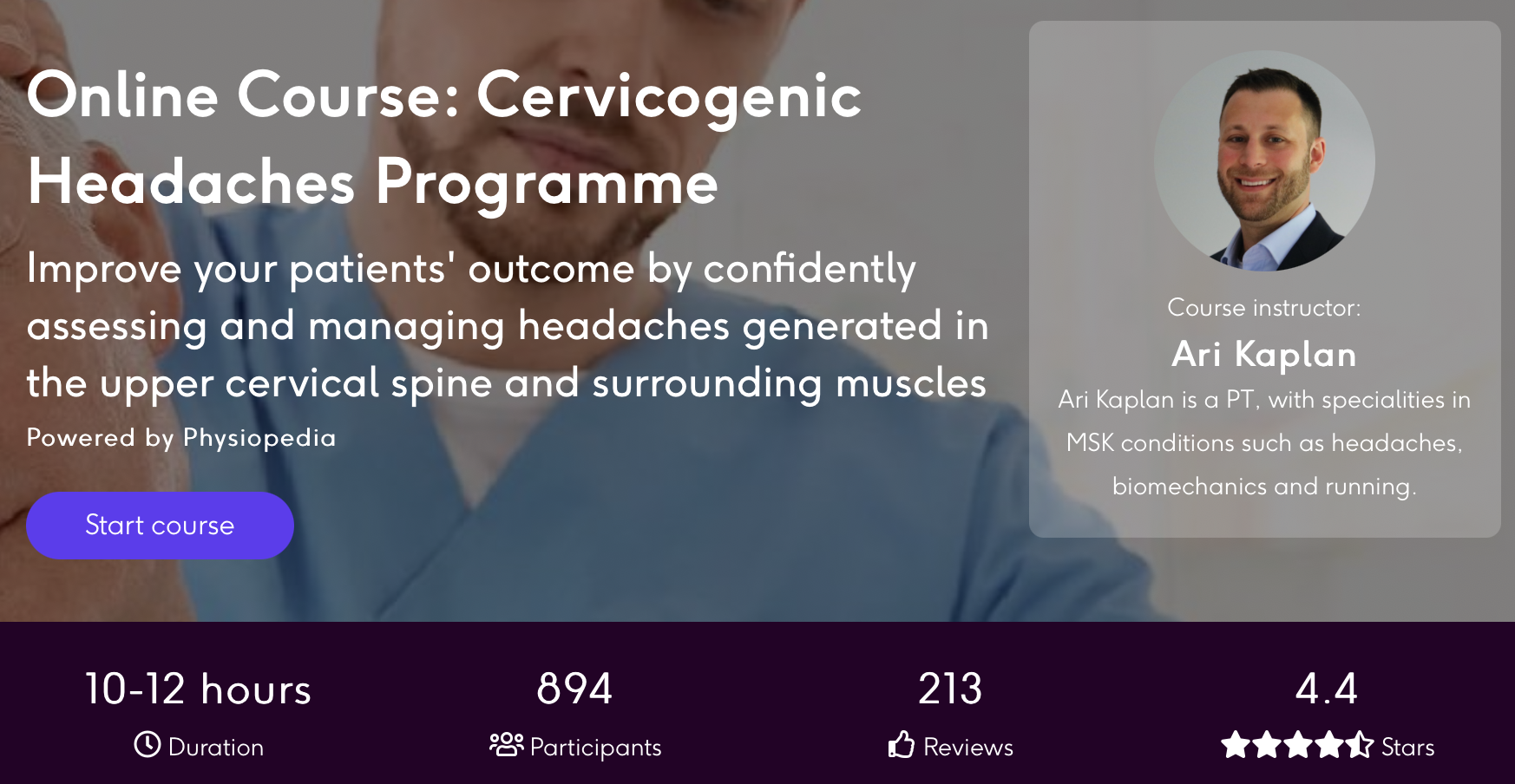Headaches are one of the most commonly reported disorders across all ages, but do you know how to mange each type effectively?
The most common types of headaches that physiotherapists will see during clinical practice are tension type headache (TTH), migraine and cervicogenic headache (CGH). These headache types have a global prevalence of 38%, 10% and 2.5% respectively.
Numerous physiotherapeutic clinical interventions can be used to treat each of these types of headache and have been shown to be effective by several studies however these studies tend to be of low quality and caution is required in their interpretation.
Learn to Differentiate Types of Headache
Because of this guidelines have been difficult to create. Part of the challenge with treating headache is the subtle overlap of symptoms between differents types which makes picking a treatment based on underlying causes challenging.
Something which would aid the creation of higher quality research investigations, into the assessment and physio treatment of different types of headache, is an expert-led consensus for headache treatment. Once a consensus is reached among these experts, the reasoning model could be integrated into randomized clinical trials to evaluate tratment effectiveness.
This is exactly what a study published in Musculoskeletal Science and Practice has set out to achieve.
Methods
This study is a 2-phase sequential design of an expert group Delphi-study conducted to obtain consensus on physiotherapy treatment for tension-type headache, migraine and cervicogenic headache.
Prior to the Delphi-survey taking place two expert panels were established. Expert group 1, which consisted of five clinicians focussed on the diagnostic criteria from a medical viewpoint and the role of physiotherapists in diagnosis and treatment of headache. Group 2 focussed on the design of the Dephi Study. Both groups were moderated by the first author as discussion during a 4 hour meeting took place with the groups.
Four rounds of survey then took place via a personalised link to a website. The first survey focussed on asking the participants to list subjective and physcial examination criteria that they found to be indicative to commence certain treatment. They were then asked to suggest treatments they found useful to apply. These answers were then used for round two.
The second and third rounds focussed on evaluate consensus among participants for the treatments used by physiotherapists in patients that suffer from headache and the clinical criteria used to decide upon a treatment choice.
The experts were asked to rate the level to which they considered the suggested treatments useful by means of a 5-point Likert-scale, ranging from 0: definitely not useful to 4: definitely useful for each treatment option. Consensual agreement on the usefulness of a treatment was set at a cut-off of at least 80% or more of the participants had to rate the treatment option as either definitely useful (4) or useful (3).
During the fourth round the experets ticked the clinical indicators they believed were useful to consider in a subjective and physical examination in order to start a given (consensual) treatment.
What is a Delphi Study?
A Delphi study or Delphi technique, is a quantitative research method aims to generate consensus through iterative rounds of questions posed to group members.
Reflection is at the heart of the process where members of the group are given the opportunity to use diagreement as a trigger for deeper analysis.
The questions are often delivered through email or questionnaires but this varies depending on the topic. This research method of is often used to create Government policy or White Papers.
Results & Clinical Implications
The expert panel agreed that graded active hands-off treatments and education were more useful than hand-on treatment for all types of headache.
That being said manual therapy and hand-on treatment can be useful tools for some cases. For example consensus was reached that cervical spine mobilisations and mobilisations with movement as well as tigger point techniques can be useful in the early stages of treatment.
The hands off, self-management approach was also reflected throughout the treatment recommendations. Lifestyle advice and modification is recommended for all 3 types of commonly found headaches in clinical practice. These include caffeine reduction, stress reduction and weightloss are good examples of this.
It is important to consier that only 14 experts participated in the study’s entirity and limited involvement from Asian clinicians. Also the panel being comprised entirely musculoskeletal clinicians bias against non-msk interventions which may not have been included within the review. This is particularly relevant for migraine headache.
This post was originally published March, 2021 and written by Scott Buxton. The page has now been updated for freshness, accuracy and comprehensiveness.
